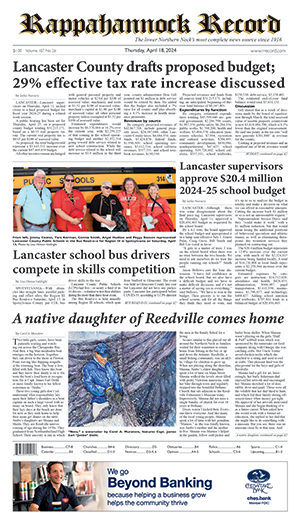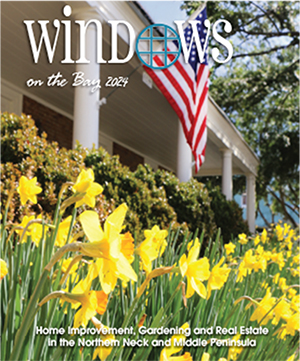by Rev. John H. Farmer
Visit the Irvington Baptist Church website
Patriotic Summer Music: A Chesapeake Bay Hymn
rancis Scott Key (1779-1843) was the son of an established Maryland family. He was born in western Maryland (Frederick) on the family estate of “Terra Rubra.” He attended grammar school and later graduated from St. John’s College in Annapolis at age 17.
Key had established a law practice in Georgetown, MD by 1805. By 1814, he’d appeared many times before the U.S. Supreme Court. The site of his house on M Street (Washington, DC) is now a memorial park.
A layman in the Episcopal Church, Key was a religious man. Even though opposed to the war, he served for a brief period in the Georgetown Light Field Artillery (1813-14). During the Battle of Bladensburg, Key assigned field positions to American troops, a duty for which he had no practical experience.
In their August 1814 departure from Washington, the British army took Key’s friend, Dr. William Beanes, prisoner. Key left for Baltimore to obtain the services of Colonel John Skinner, the government’s prisoner of war exchange agent. Together they sailed down the Bay on a truce ship and met the British fleet. Key successfully negotiated the doctor’s release, but was detained with Skinner and Beanes by the British until after the attack on Baltimore.
Key and party were held prisoner on a boat below the fort during the bombardment. It was from that on-deck site that he witnessed the British attack on Fort McHenry.
A flag made by Mary Young Pickersgill and her 13-year-old daughter, Caroline, flew over Fort McHenry. Working in an upstairs front bedroom, they’d used 400 yards of best quality wool bunting. They cut 15 stars that measured two feet from point to point. Eight red and seven white stripes, each two feet wide, were cut. Laying out the material on the malt house floor of Claggett’s Brewery, the flag was sewn together. It measured 30 by 42 feet and cost $405.90.
On the morning of September 14, 1814, after the 25-hour battle and American victory over the British at Fort McHenry, Francis Scott Key, seeing the flag, asked: “Then, in that hour of deliverance, my heart spoke. Does not such a country and such defenders of their country, deserve a song?”
After being freed by the British, Key went to a room in the Indian Queen Hotel, Baltimore. He wrote out a fresh copy of the poem. Judge J. H. Nicholson, his brother-in-law, took it to a printer. Copies were circulated around Baltimore under the title Defence of Fort M’Henry.
The copy that Key wrote in his hotel remained in the Nicholson family for 93 years. In 1907 it was sold to Henry Walters of Baltimore. In 1934 it was bought at auction in New York from the Walters estate by the Walters Art Gallery, Baltimore for $26,400. In 1953 the Walters Gallery sold the manuscript to the Maryland Historical Society for the same price. Another copy that Key made is in the Library of Congress.
In October a Baltimore actor first sang Key’s new song in a public performance and called it “Star-Spangled Banner.” Because it was not considered a hymn, as such, it only entered our Baptist repertoire in Kingdom Songs, (Nashville, 1921, No. 327).
After the war, Key served as a United States District Attorney and continued as an Episcopal layman, writing several hymns. On January 11, 1843, he died of pleurisy while visiting his sister in Baltimore. He was buried in Mount Olivet Cemetery (Frederick, MD). Our flag, so honored by him, flies there day and night.
Another interesting aside is that Key’s other brother-in-law, Roger Brooke Taney, served as Chief Justice and administered the oath of office to Lincoln in 1861.
However, it was the valiant defense of Fort McHenry by American forces during the British attack on September 13, 1814, that inspired the then 35-year old poet-lawyer Francis Scott Key to write the poem. On March 3, 1931, one hundred-seventeen years later, Congress enacted legislation that made “The Star-Spangled Banner” our official national anthem. The poem was written to match the meter of the English song, “To Anacreon in Heaven,” by Ralph Tomlinson (Vocal Magazine, London, 1778). Key had sung the tune with another set of words at an 1805 dinner honoring Naval hero Commander Stephen Decatur (1779-1820). Decatur was slain in a duel with naval officer James Barron.
Only the two verses are in our hymnal. It only takes a little digging to uncover the missing verses:
“On the shore, dimly seen through the mists of the deep,
“Where the foe’s haughty host in dread silence reposes,
What is that which the breeze, o’er the towering steep,
As it fitfully blows, half conceals, half discloses?
Now it catches the gleam of the morning’s first beam,
In full glory reflected now shines on the stream:
‘Tis the star-spangled banner! O long may it wave
O’er the land of the free and the home of the brave.
“And where is that band who so vauntingly swore
That the havoc of war and the battle’s confusion
A home and a country should leave us no more?
Their blood has wiped out their foul footstep’s pollution.
No refuge could save the hireling and slave
From the terror of flight, or the gloom of the grave:
And the star-spangled banner in triumph doth wave
O’er the land of the free and the home of the brave.”











